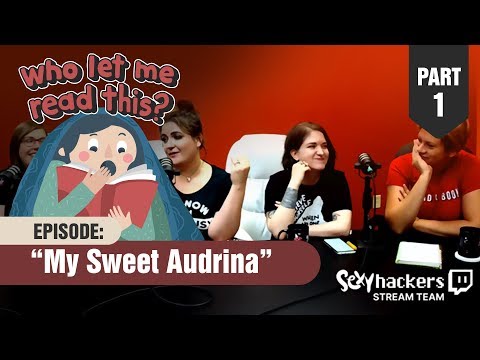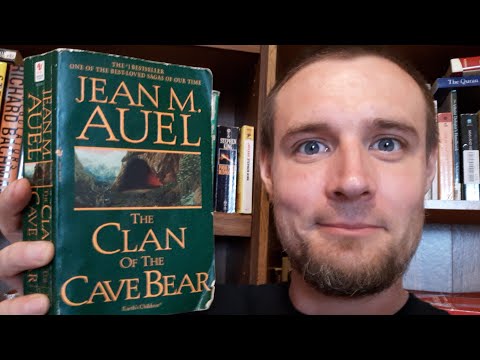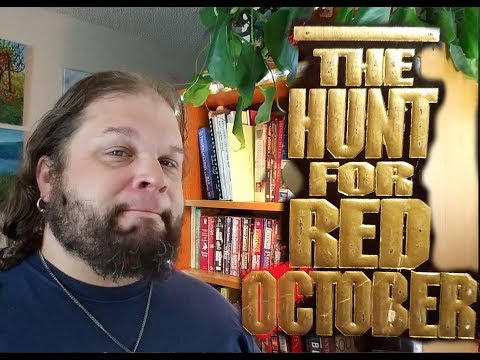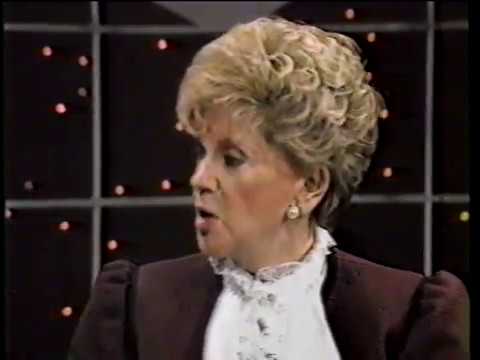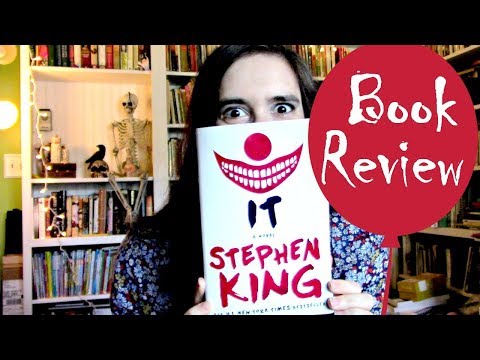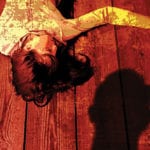The best-loved 1980s beach reads are bold, unapologetic, and above all else, they are fun.
10 My Sweet Audrina
V.C. Andrews created the family saga Flowers in the Attic, which became a long-running series. In 1982, she released her only stand-alone novel, My Sweet Audrina, which has since become a creepy classic. The book is narrated by Audrina—a troubled 7-year-old girl with striking violet eyes. She lives in a remote Victorian mansion with her strict parents and evil cousin/half sister, Vera. We learn that there was once another Audrina, an older sister who was murdered in the woods on her ninth birthday. The second Audrina now lives in a confused world of stopped clocks and hidden calendars—until she finally uncovers the truth. Andrews’s complicated plot features psychic visions, an ex-ice skater amputee, and a very dangerous staircase. It became a bestseller, and the high-camp drama still enjoys a cult following today.[1]
9 If Tomorrow Comes
Sidney Sheldon, who created the 1980s TV show Hart to Hart, is a classic storyteller. His fast-paced novels mainly featured ordinary people thrust into dangerous worlds, with plot twists, cliff-hangers, and unconventional endings. If Tomorrow Comes was published in 1985 when Sheldon was a best-selling author, known as the “Prince of Potboilers.” He tells the story of Tracy Whitney, a bank clerk with a seemingly perfect life who loses everything when she is double-crossed and ends up in jail. From her miserable prison cell, Tracy swears revenge on the Mafia boss who framed her. The book then follows her new life of crime from the Louisiana State Penitentiary, across Europe, and beyond. The suspenseful plot rattles along at lightning speed, with a question mark ending—typical of Sheldon’s style.[2]
8 The Sicilian
The Sicilian was billed as the long-awaited sequel to The Godfather, Mario Puzo’s famous 1969 book. The novel picks up the story of Michael Corleone. However, it is primarily based on the real-life exploits of Salvatore Giuliano, an activist and anti-hero. Michael is living in exile in Sicily when his father, Don Corleone, orders him to return to the U.S. with Giuliano in tow. The real Giuliano (known as “The Last Bandit”) was part of Sicily’s black market, distributing cheap food to the region’s poor—against the Mafia’s wishes. Puzo changed the name of his bandit to “Guiliano,” and the combination of history and fiction turned the book into a best seller.[3]
7 The Clan of the Cave Bear
In stark contrast to the 1980s novels about money and ambition is The Clan of the Cave Bear. Author Jean M Auel spent years researching Ice Age Europe for her epic tale about Ayla, an orphan left alone in the wilderness. The child is found by Iza, a Neanderthal woman from the Cave Bear Clan. Iza adopts Ayla, despite the child being from a rival clan, the Others, who had destroyed the Clan’s land. The book describes Ayla’s struggle for acceptance as she grows up in the hostile Clan. Published in 1980, it is the first in a series called “Earth’s Children.” While the novel was wildly popular, it was banned by several schools after parents complained about scenes of graphic violence.[4]
6 The Hunt for Red October
In 1984, Tom Clancy’s debut novel, The Hunt for Red October, was released. The protagonist is Jack Ryan, a former U.S. Marine turned CIA analyst who discovers a deadly Soviet submarine “Red October.” The book was first published by the Naval Institute Press. Despite its heavy technical language, audiences were gripped, and it topped the bestseller lists. In addition, the novel’s themes of Cold War tensions and espionage struck a chord with 1980s readers. Clancy wrote a further 21 books starring Jack Ryan and spawned a new genre of fiction called “Techno Thrillers.” The “Ryanverse” books have been adapted into numerous films and a TV series.[5]
5 Princess Daisy
Judith Krantz was the editor of Good Housekeeping magazine who began writing fiction in her fifties. Her first novel, Scruples, was sold for a small sum in 1978, but she went on to sell 80 million books during her career. Krantz’s books are pure glamour, and her heroines are beautiful, ballsy women born into privilege. Princess Daisy was Krantz’s second novel, published in 1980. It reached number one on the New York Times Bestsellers list before its arrival in bookstores. Princess Marguerite Alexdrovna “Daisy” Valensky is the daughter of a Russian prince and an American film star. Her gilded life of palaces and private jets ends abruptly, and the book follows her journey as she claws her way back to the top. Krantz is known as the originator of “Sex and Shopping” novels, a title she revelled in as she borrowed the term for the title of her memoir, released in 2000.[6]
4 IT
Stephen King is the undisputed Master of Horror. In 1986, he released IT, the title of which refers to an evil spirit that can take on the appearance of everyone’s worst nightmare. THe book also features “The Loser’s Club,” a group of outcast kids in the fictional Maine town of Derry, who is targeted by IT. While working on the story, King tried to think of what would scare the children most—and the answer was clowns. Pennywise the Dancing Clown was just one of the horrors that IT morphed into as it terrorized the Losers Club over the summer of 1958. The kids grow up and try to forget about IT until 27 years later when the Losers Club is forced to reunite. IT is literally the biggest book of King’s career—as it covers three decades of fear in over 1,000 pages.[7]
3 Changes
The 1980s literary appetite may have been for money and sex, but there was still a market for frothy romance. And for this, you have Danielle Steel. Steel has sold nearly a billion books using the simple formula of beautiful people, heartbreak, and love. However, her modern fairy tales stand out from the other bestsellers of the time as they offer old-fashioned escapism. Changes was published in 1983 and is about Melanie, a divorced TV journalist and single mother. Melanie has no time for romance in her high-octane world until she meets widowed heart surgeon Dr. Peter Hallam. The pair fall in love but face major obstacles due to their careers and the fact that they live far apart in New York and LA. The “changes” they experience along the way lead to Steel’s signature happy ending. Steel—aged 73—is still a prolific writer today and is the fourth best-selling fiction author of all time.[8]
2 Lace
Lace is the legendary 1982 novel famed for its mind-bending sex scenes and the words: “Which one of you bitches is my mother?” The line was delivered by Lili, a world-famous star with “flashing chestnut eyes.” The four women in the frame—Judy, Kate, Maxine, and Pagan—were childhood friends who met at boarding school before each went on to have successful lives. The question is, who was the teenage mother who gave Lili away at birth? Shirley Conran’s debut novel caused a literary sensation due to the graphic sex scenes (one of which co-stars a goldfish) and the theme of female friendships surviving against the odds. Lace was re-published on its 30th anniversary and was hailed as a feminist masterpiece by a new generation of readers.[9]
1 Hollywood Wives
When people remember the first 1980s blockbuster they stole from their parents’ bookshelf, it will usually be the work of Jackie Collins. Throughout the 1980s and beyond, Collins produced a stream of novels all packed with stories of fame, money, and sex. Her appeal came from the genuine Hollywood connections she had formed after years of living in Beverly Hills. Collins drew inspiration from the antics of her celebrity friends at the parties they would attend. Her recollections then became the larger-than-life plot of Hollywood Wives, published in 1983. Collins weaves together a story of the different wives, all married to Hollywood big-hitters and enjoying a fantasy lifestyle. But, beneath the glossy veneer, there lurks a darker tale of adultery, blackmail, alcoholism, and aging in a world that worships youth. Throw into the mix a deranged killer on the loose, and you have the perfect page-turner. Collins’s books all played with stereotypes—women could be tough bosses, men were often prized for their looks, and, for this, she was ahead of her time. Critics dismissed the book as pure trash, but it sold 15 million copies and perfectly captured the excesses of the decade.[10]
